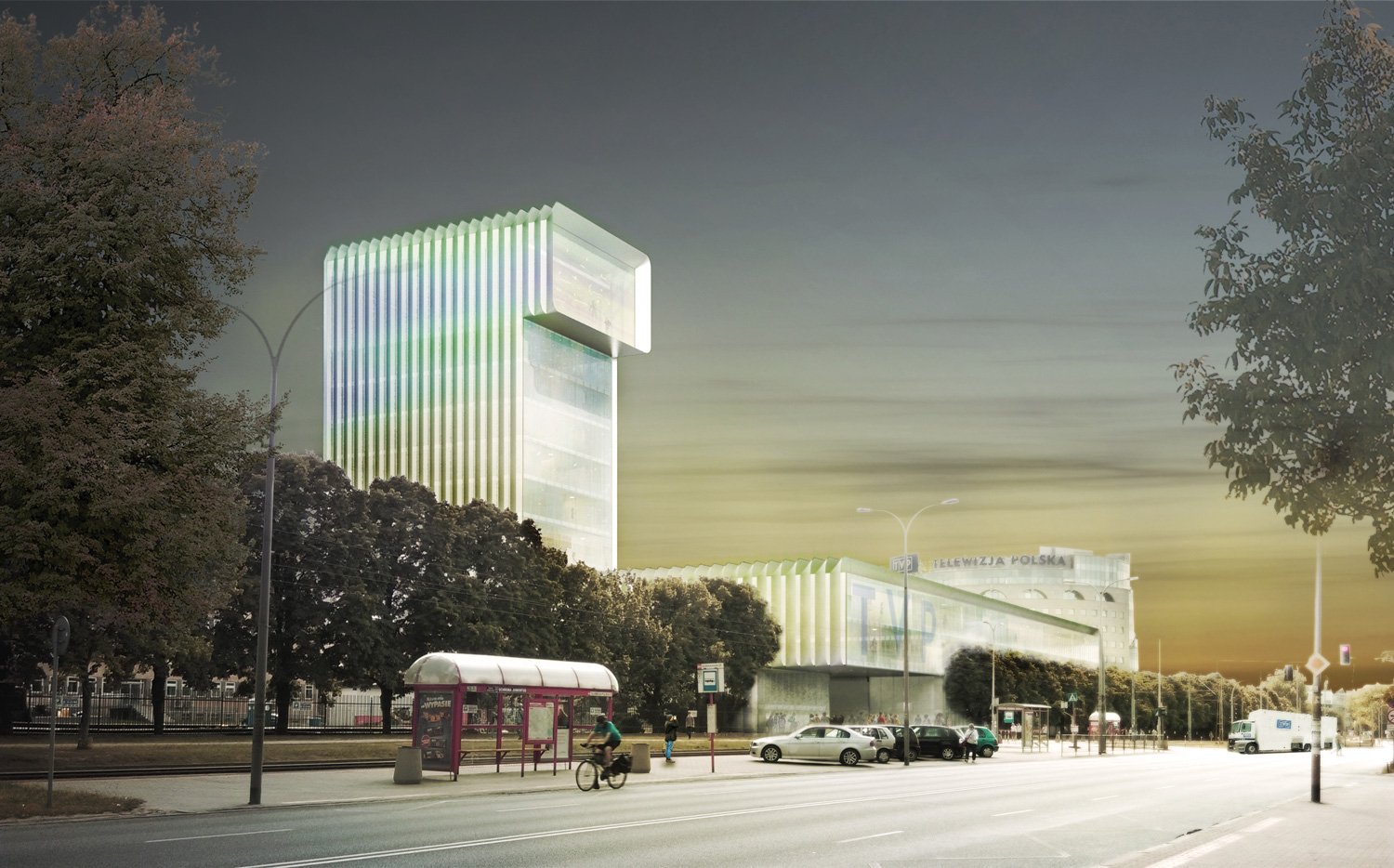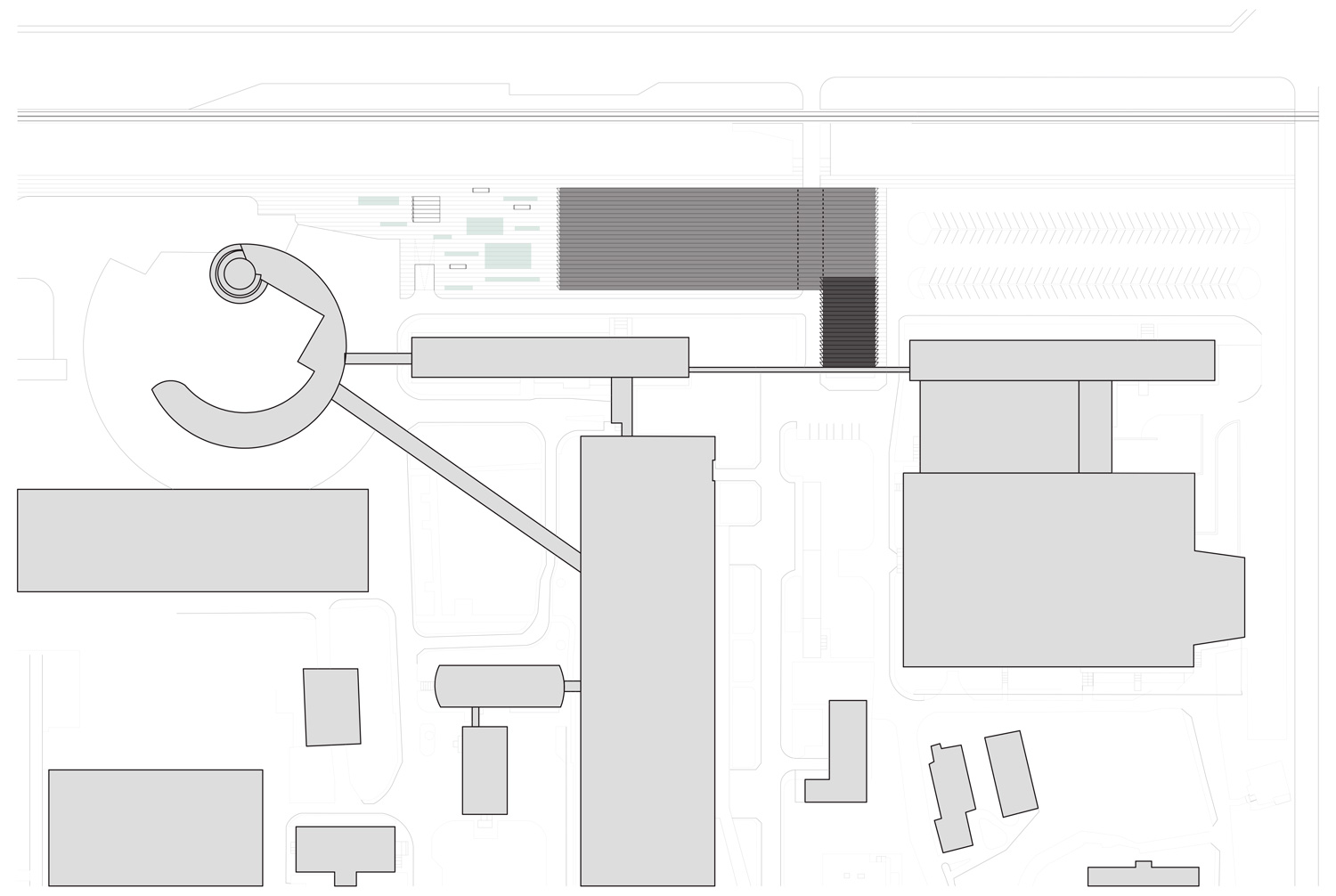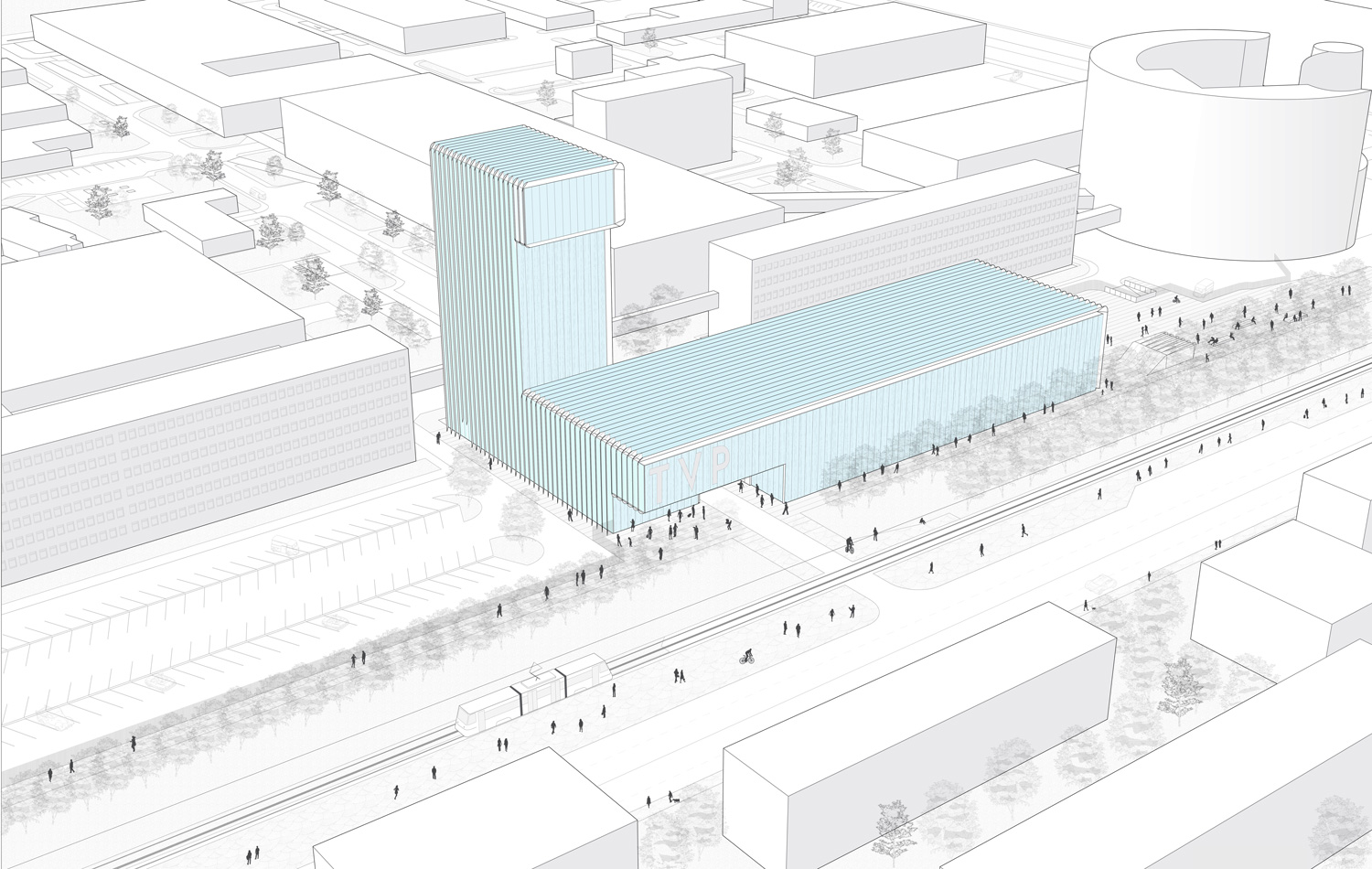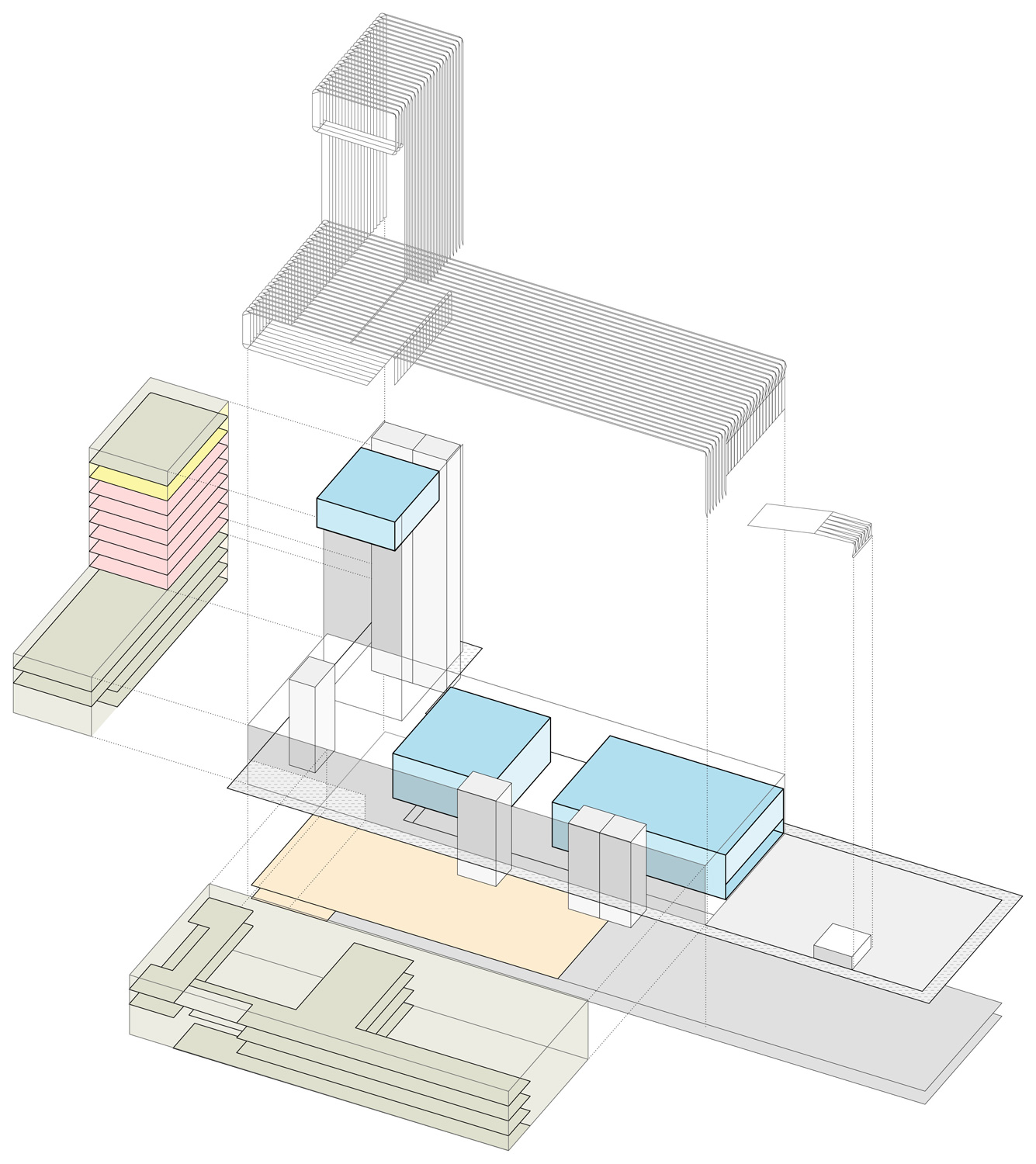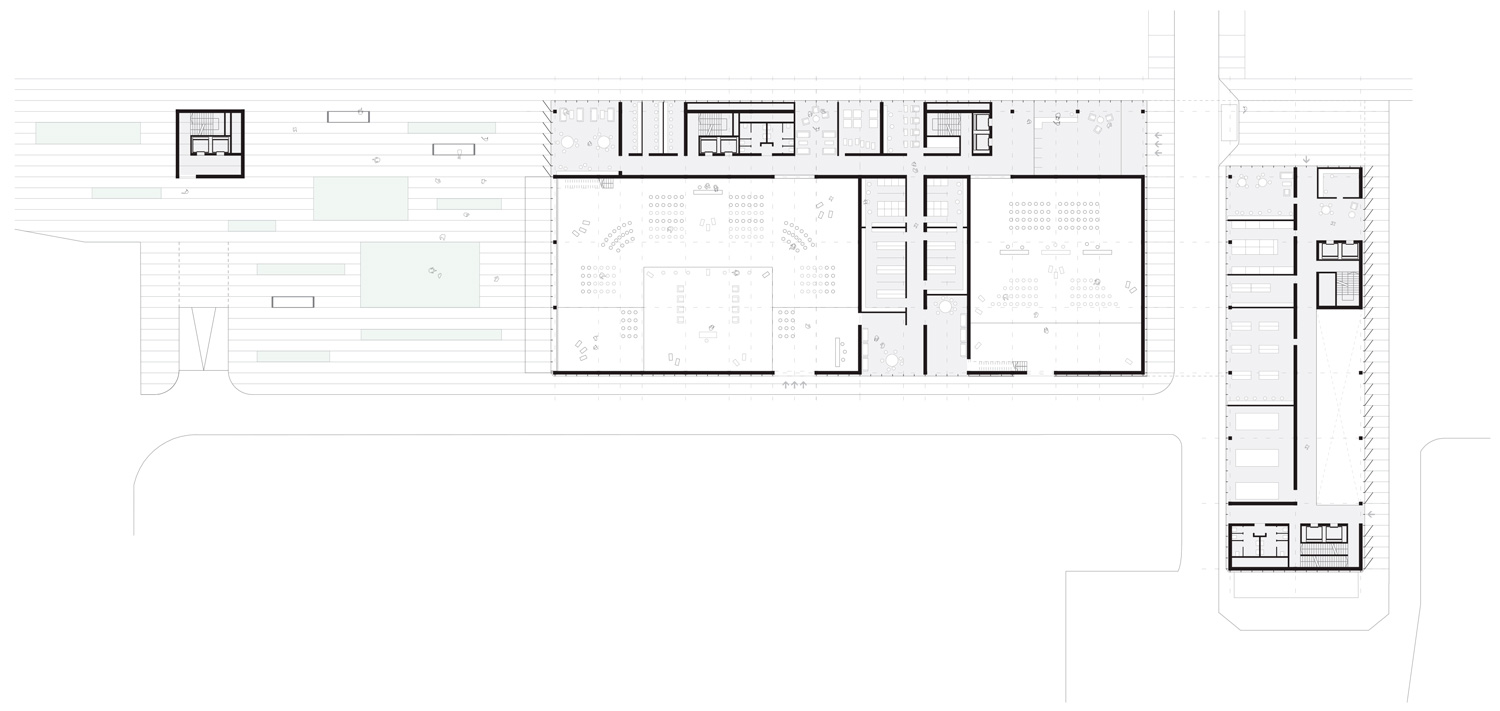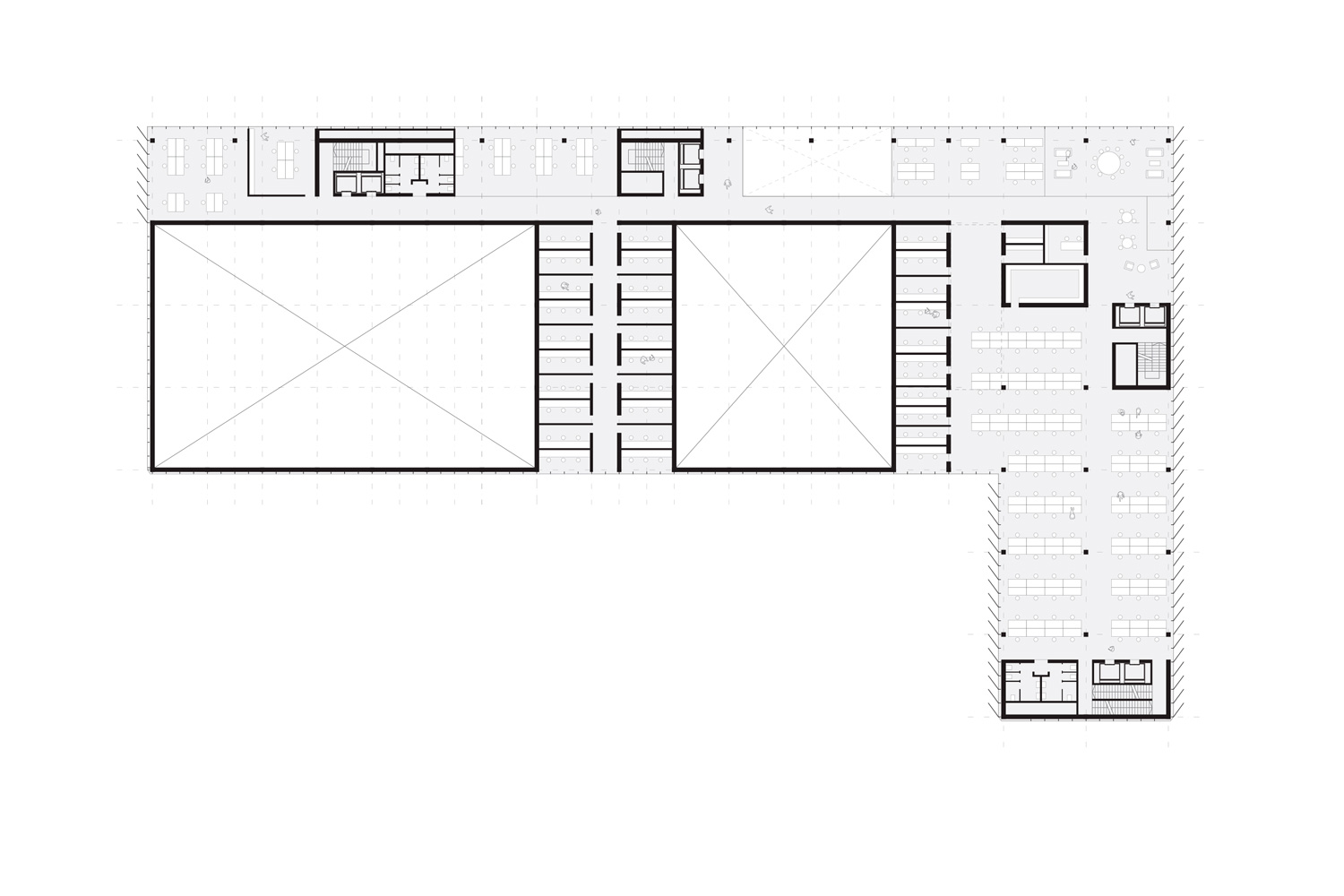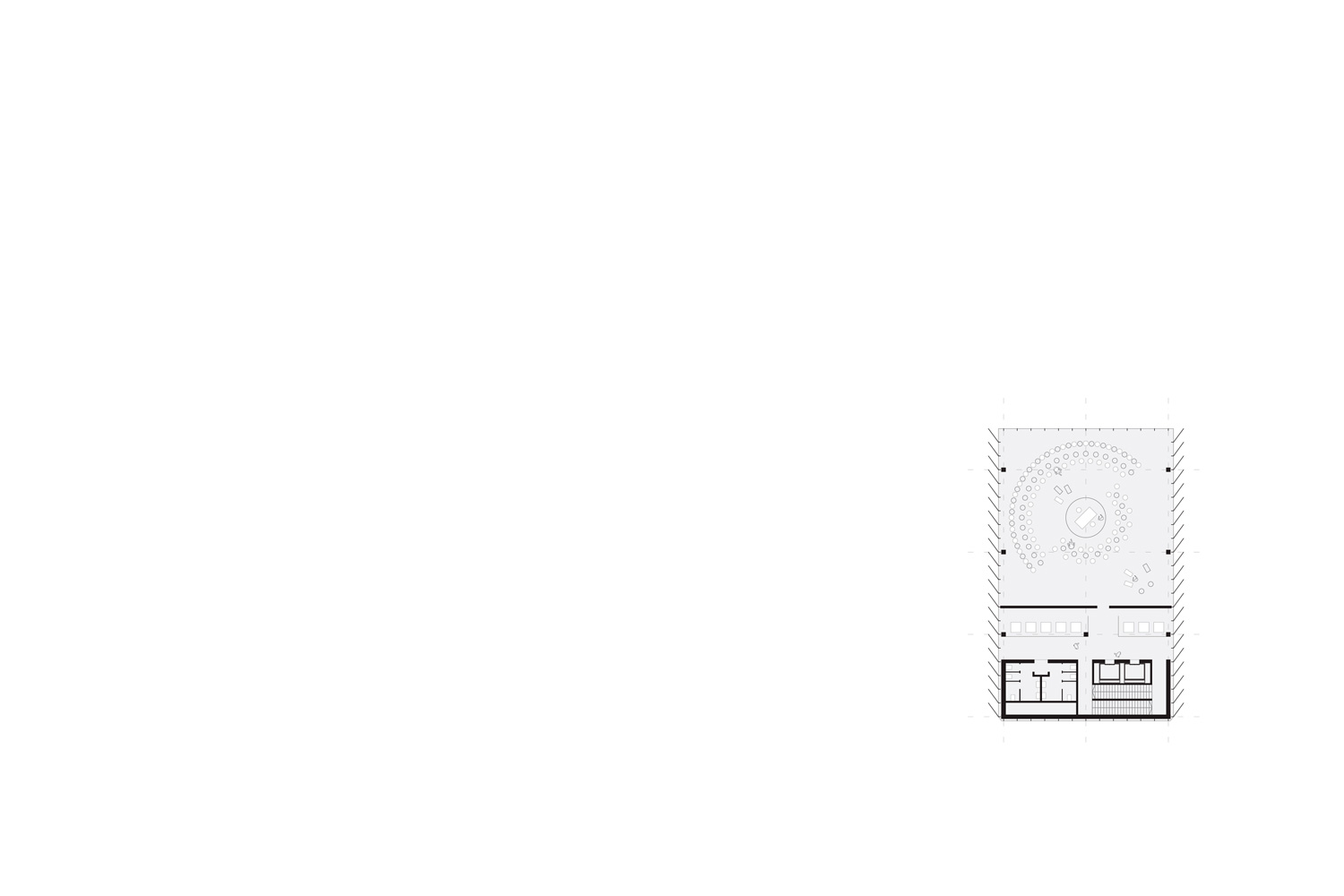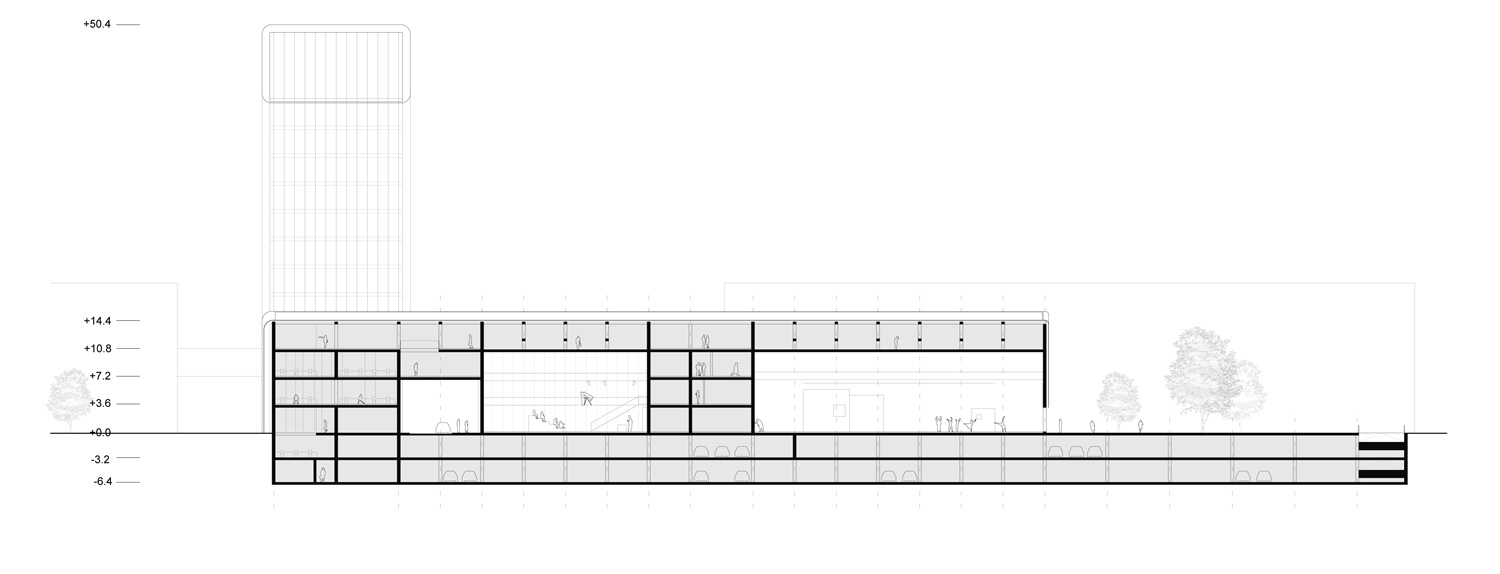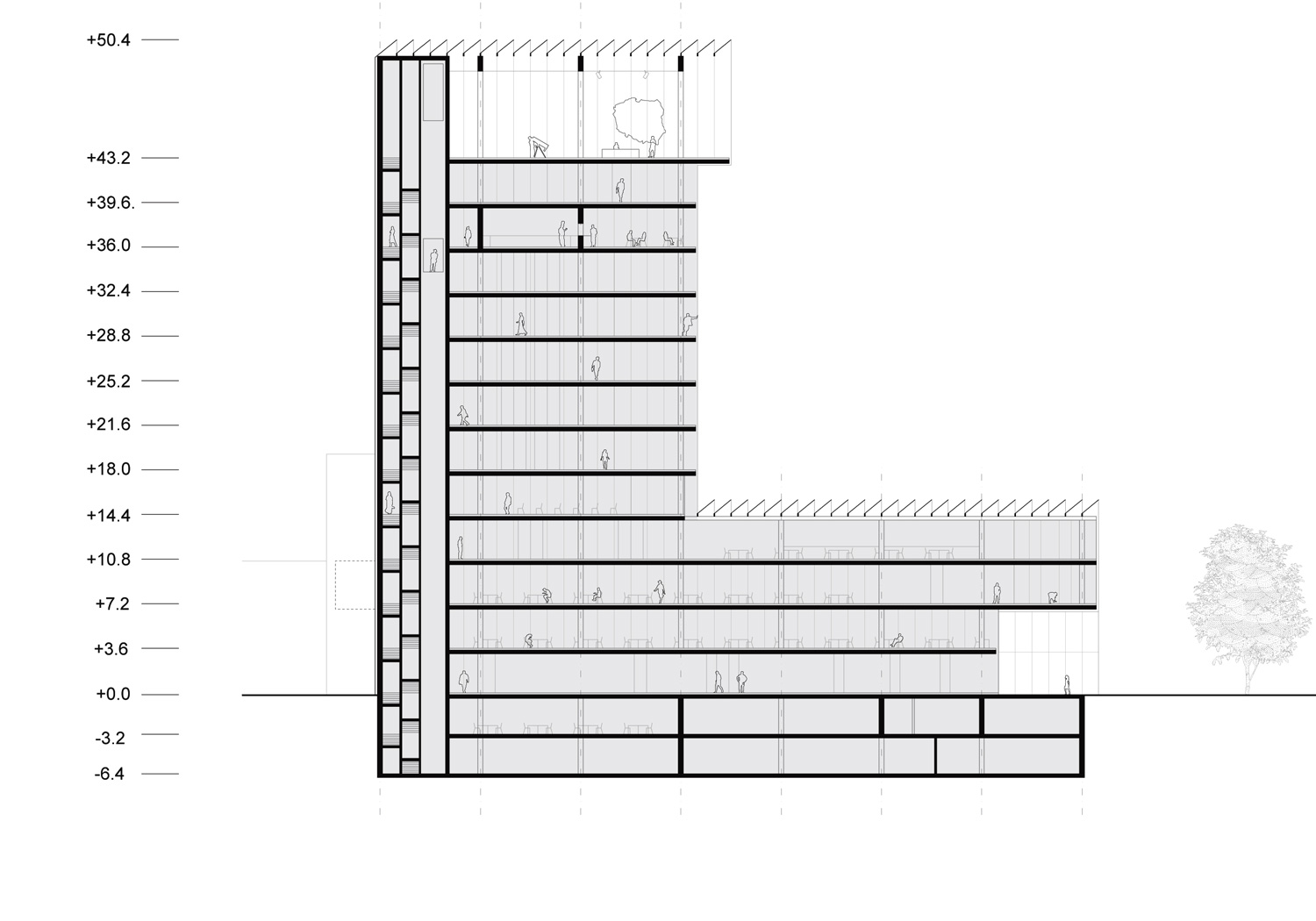1246-AZP-WAW.PL-2015
Client: Telewizja Polska S.A.
Status: Competition (2015)
Location: Warsaw, Poland
Climate: Continental, Temperate
Material: Glass
Environment: Urban
Visualizer: Studio
Scale: Medium
Types: Headquarters, Institutional
This project was designed to house the PBC’s new studio facilities, plus a large amount of additional working spaces, within its new Campus. Our proposal emerges directly from considering carefully the area for extension and optimizing the use and the connectivity to the existing Campus. Our aim is to engage the very essence of the PBC as a public institution by connecting the space of the studio, physically and visually with the space of the city, and to provide an adequate expression to an institution related to audiovisual media. .
The building is located within the space between the existing Campus and Avenue Jana Pawla Woronicza. The massing of the building has been designed to make the building as compact as possible so as to optimize envelope ratios and therefore energy consumption, while intensifying the interrelation of the programs inside the building: the complex has been fitted into a large rectangular box 100m x 34m x 16m in size, with an attached tower which provides the requested location of the “Panoramic Studio”, providing programmatic continuity between the PBC new studio facilities and the specific location required from this studio.
As the building has to host two large production studios/black boxes, we have laid them out on the east and the west of the Central campus alleyway. Those two black boxes will be accessible for large vehicles from the South face, and will be largely opaque to avoid sunlight. The large studio will be located to the west of the building, offering direct access to an open public space to be used in conjunction to the new building. These new open public space can be used to host public events with the support of the large studio box. The building’s transparent frontage allows the public to catch glimpses of performances from the street, as if invited backstage, and conversely to allow the performers to operate within the urban space. This ‘transparent’ mode is one of the many ways in which the studio and city would relate – a scenario whereby, when the blinds incorporated within the façade system are lifted, the building is transformed into a stage: the PBC presents itself in public as an open and transparent organization.
Technical facilities will be located in the space between those two boxes, in order to optimize their availability to serve both studios. On the north face of the complex, other programs will be wrapping around the two black boxes in order to produce an active frontage towards Avenue Jana Pawla Woronicza.
To the east of the studio boxes, we have located some additional program connected to the studio functions, with a more public character, such as the canteen. The main access road into the complex will be provided through a tunnel aligned with Central campus alleyway, and where the security control will take place inside of the building. To the west of this gate we will find the main access for personnel of PBC. On the East side we will have an access of the require office space for OTV Warszawa and OPR, located within the PBC complex.
The roof of the studios will be covered by one layer of production and administration spaces for the PBC (Redaction and office-administration rooms). Located on a single floor but lit from rooflights, these spaces will be tremendously flexible and apt for the dynamism of the media industry, enabling a very close relation to the studio spaces.
The most prominent element of the complex is a 50m tower, located in the footprint of the existing tower, with the “Panoramic studio” on top, 1 level of technical support for the studio, the panoramic canteen and 6 levels of rentable office spaces below. Those functions will be connected through a vertical circulation core, placed on the south side of the tower. The studio volume will present a small cantilever towards the north which will make it identifiable as one of the most distinctive units of the complex: a sort of eye from which the organization watches over Warsaw.
One of the most distinctive qualities of the proposed design will be its cladding system, which will be delivered with insulated aluminum panels acting as brise-soleils on the East and West facades of the “box”, and as a factory-like clerestory roofing. The bands of insulated panels will be tilted 45⁰ in respect to the box surfaces, being able to shield E/W facades from the morning and afternoon sunlight, and the roof from direct sunlight into the production and administration offices. Double glazed cladding units will fill the gaps between these large scale louvers providing adequate daylighting to most of the spaces in the complex. The geometrical continuity between the brise-soleils and the linear clerestories on the roof will be produced by a specially bent corner panel which is aimed to exploit an aesthetics of linearity and continuity which seek a resonance with the narrative quality of audiovisual media. These aluminium bands will be surfaced with a dichroic film which will constantly produce color-changing reflections, much like the RGB systems that constitute the main support of contemporary audio-visual media. These color-changing bands will hopefully remind the public of film strips or other audiovisual media linear support.
The main North façade will be built with a transparent unitized curtain wall system which will be able to expose the working of the studios literally to the public eye, demonstrating the transparency of the PBC as an important public institution in Poland.
